Poland
In Daniel’s words:
When an invitation to perform Doodling at the Gdański Festiwal Tańca, in Gdańsk, a large and beautiful northern port city on the Baltic, came I took it. 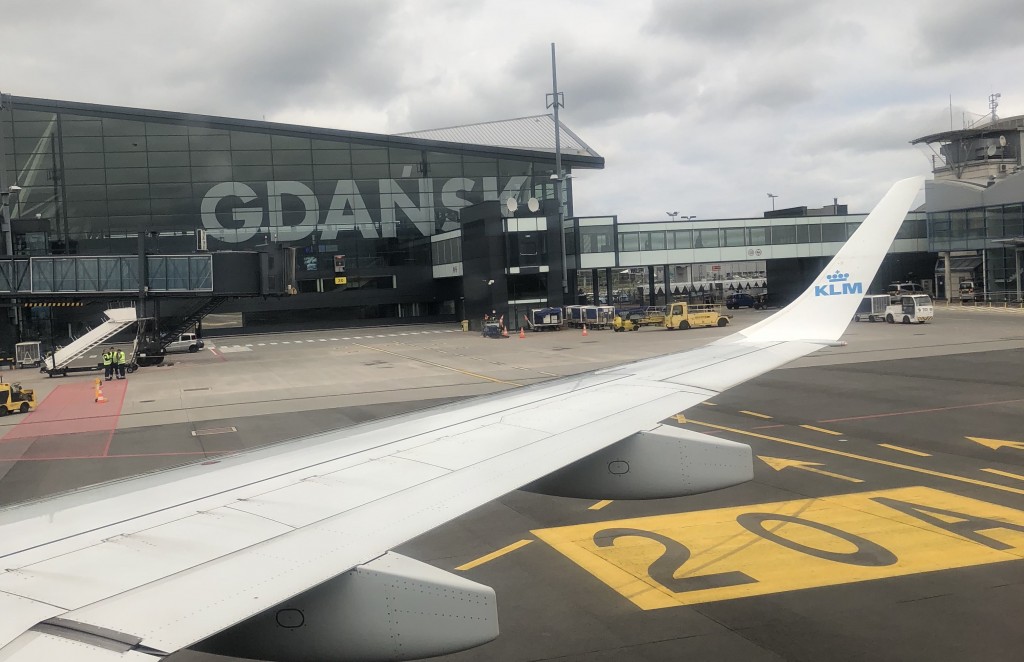 JFK to Amsterdam to Gdańsk on June 12, the second day of the week-long festival. Here I am on the train to the theater to catch that night’s show, having arrived a few hours earlier. The trains were fantastic, each day, throughout the trip.
JFK to Amsterdam to Gdańsk on June 12, the second day of the week-long festival. Here I am on the train to the theater to catch that night’s show, having arrived a few hours earlier. The trains were fantastic, each day, throughout the trip.
Klub Zak, the venue which produces the Festival, houses the theater, where we performed, a cinema, a hip restaurant/bar, and outdoor patio.  The train station by the theater, Gdańsk Zaspa, looked like this. The first few cloudy days turned to perfect weather: sunny, warm, not too hot, no humidity.
The train station by the theater, Gdańsk Zaspa, looked like this. The first few cloudy days turned to perfect weather: sunny, warm, not too hot, no humidity.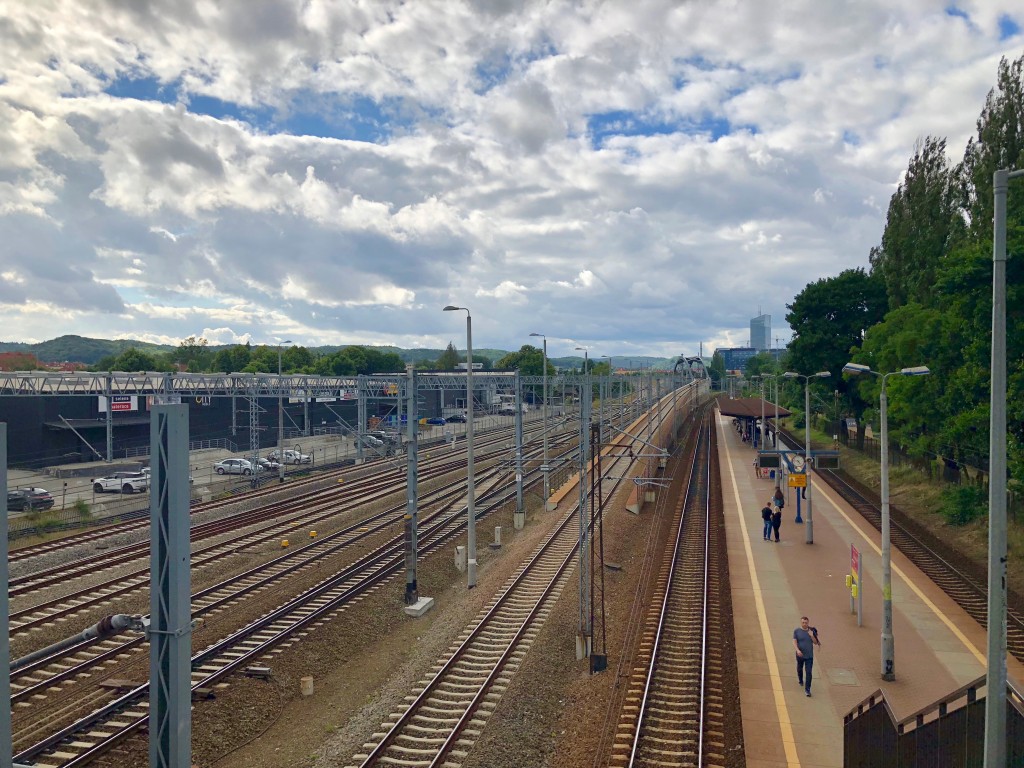 Terrific surprise to see our names on this large poster outside the building.
Terrific surprise to see our names on this large poster outside the building. 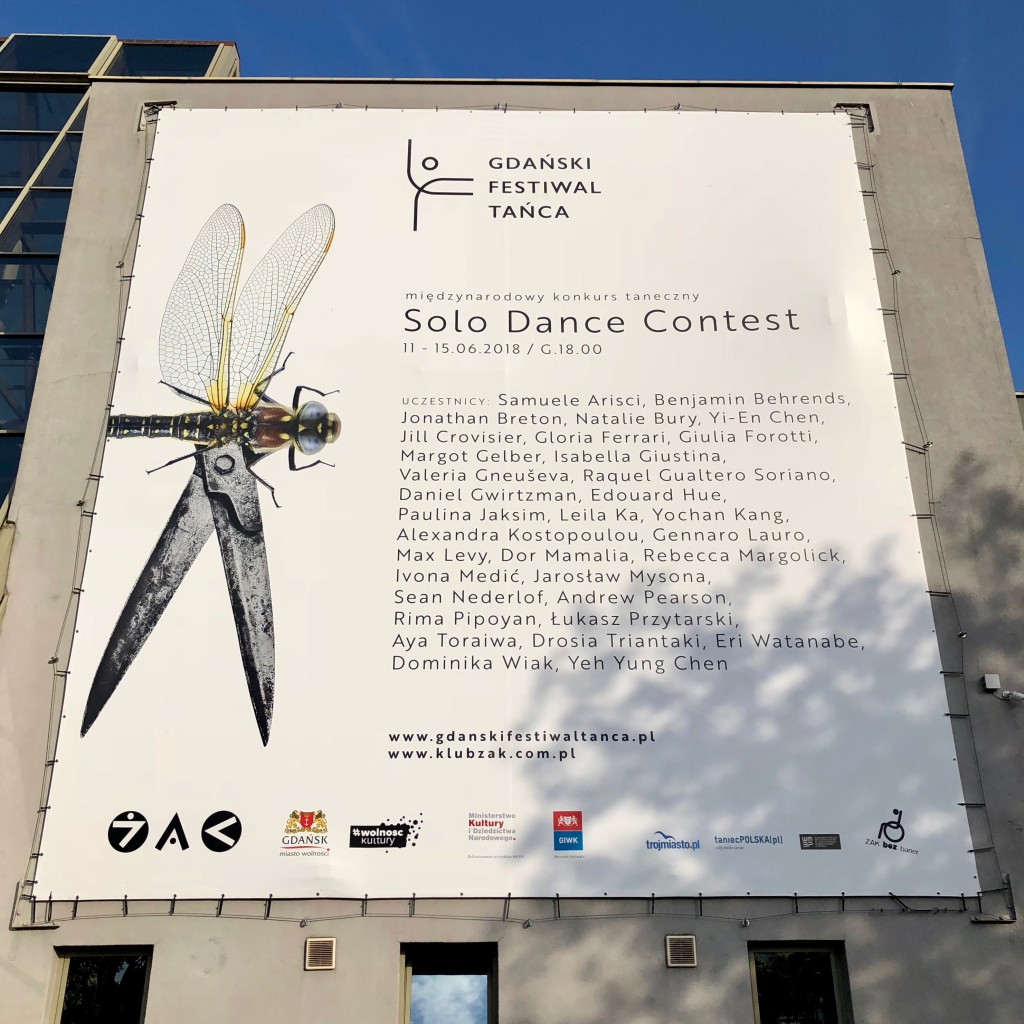 A close-up of the poster with blue skies! The accommodations were lovely everywhere I stayed.
A close-up of the poster with blue skies! The accommodations were lovely everywhere I stayed.  Room With A View. Here, a cherry tree in Oliwa, a nice neighborhood two quick train stations away. To Park Oliwski, a city park on 10 hectares of land dating back to the 18th Century.
Room With A View. Here, a cherry tree in Oliwa, a nice neighborhood two quick train stations away. To Park Oliwski, a city park on 10 hectares of land dating back to the 18th Century. 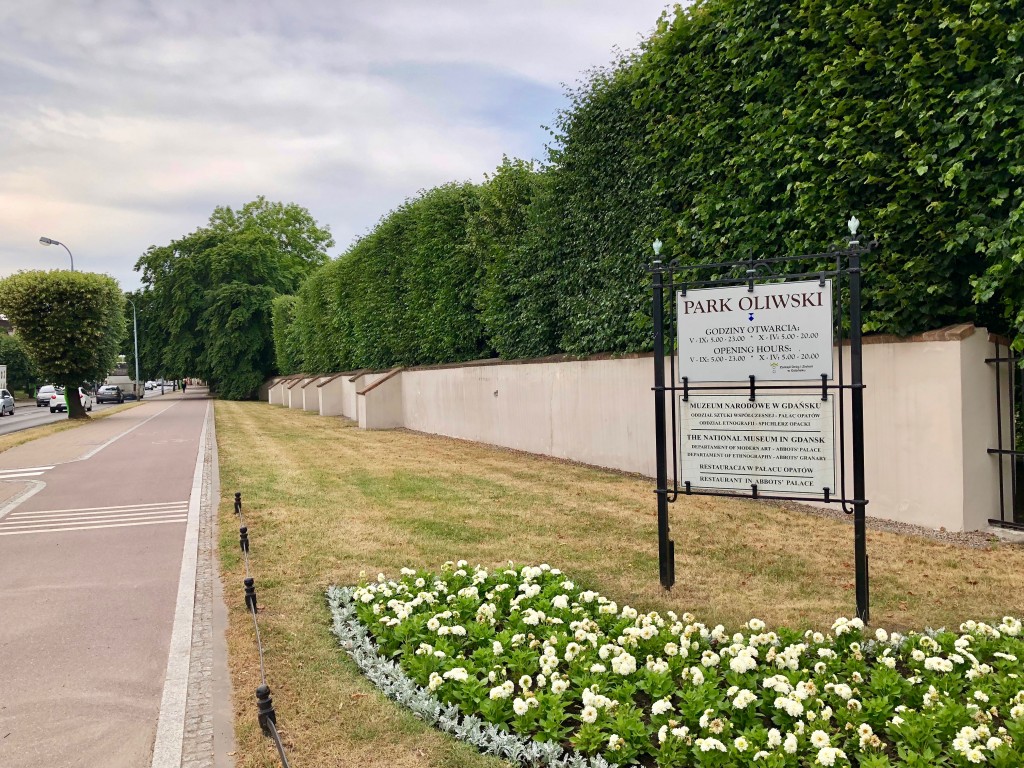 Magnificent gardens, ponds, pools, brooks, towering hedges (alleys), and French-style gardens.
Magnificent gardens, ponds, pools, brooks, towering hedges (alleys), and French-style gardens. 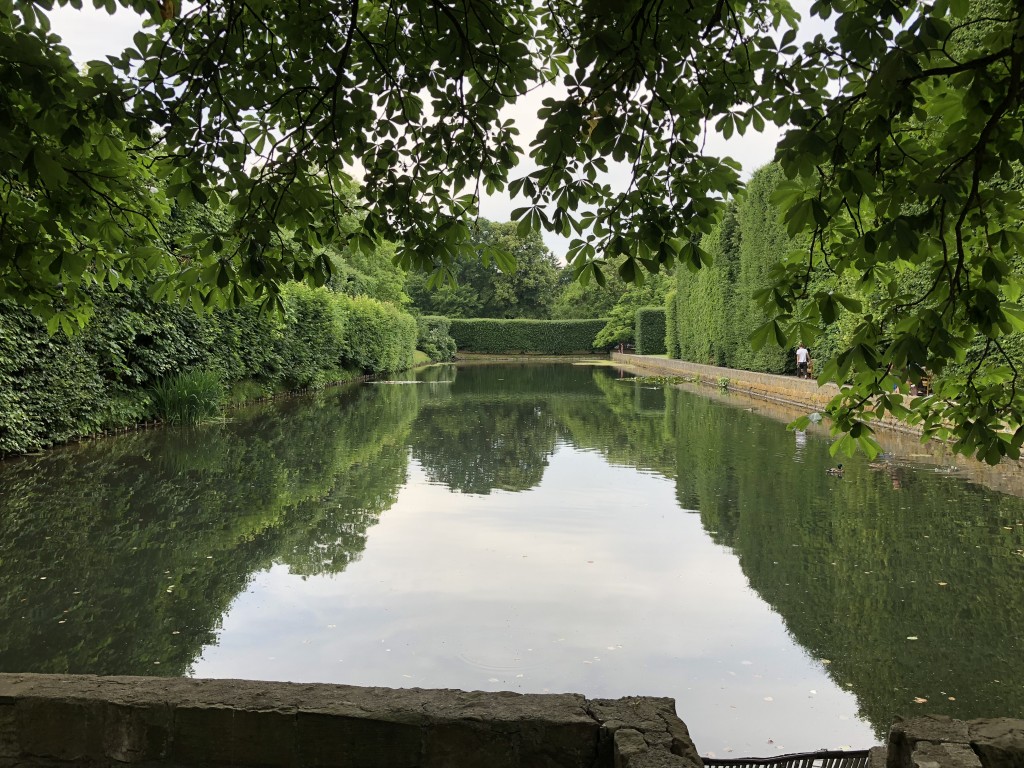 Many more photographs of the neighborhoods, houses, parks, trees, and public art.
Many more photographs of the neighborhoods, houses, parks, trees, and public art.  Thursday night June 14th I performed second from the end, the last day of competition for the Solo Dance Festival.
Thursday night June 14th I performed second from the end, the last day of competition for the Solo Dance Festival.  The jacket comes off and it’s easier to see me…in the camouflage. The work was reviewed by Mirosław Baran that night: “American Daniel Gwirtzman treated the title seriously in an unpretentious and witty “Doodling” (“Bazgrolić”); the show is a combination of various types of movement (performed for very diverse music), dance “scribbles”, freely taken up and abandoned by the dancer.”
The jacket comes off and it’s easier to see me…in the camouflage. The work was reviewed by Mirosław Baran that night: “American Daniel Gwirtzman treated the title seriously in an unpretentious and witty “Doodling” (“Bazgrolić”); the show is a combination of various types of movement (performed for very diverse music), dance “scribbles”, freely taken up and abandoned by the dancer.”  I performed with other solo artists from France, Croatia, Israel, Spain, Italy, Germany, Greece, Japan, Taiwan, South Korea, and Poland! A snapshot of the curtain call!
I performed with other solo artists from France, Croatia, Israel, Spain, Italy, Germany, Greece, Japan, Taiwan, South Korea, and Poland! A snapshot of the curtain call! 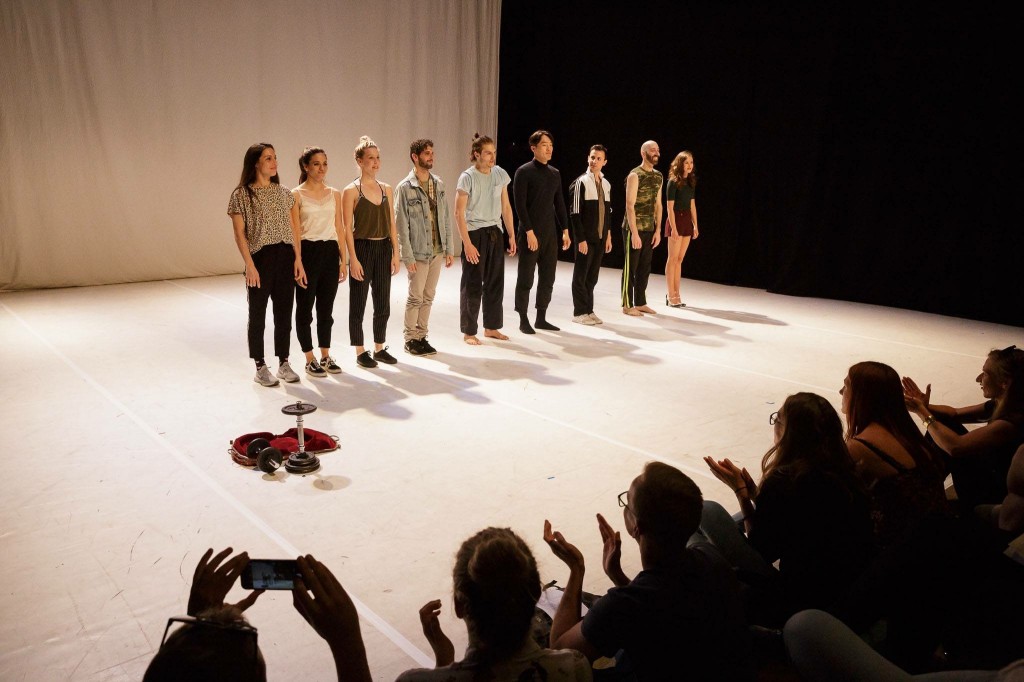 A wonderful surprise after the show. Taking the train from the airport to Gdańsk I met Vibeke and Helen, vacationing from Norway, who came to see me perform!
A wonderful surprise after the show. Taking the train from the airport to Gdańsk I met Vibeke and Helen, vacationing from Norway, who came to see me perform!  After the festival ended there was time to explore Gdańsk, starting with the historic Old City!
After the festival ended there was time to explore Gdańsk, starting with the historic Old City!  This is the Golden Gate, the entrance to the unique large Old Town which dates back to the Middle Ages.
This is the Golden Gate, the entrance to the unique large Old Town which dates back to the Middle Ages.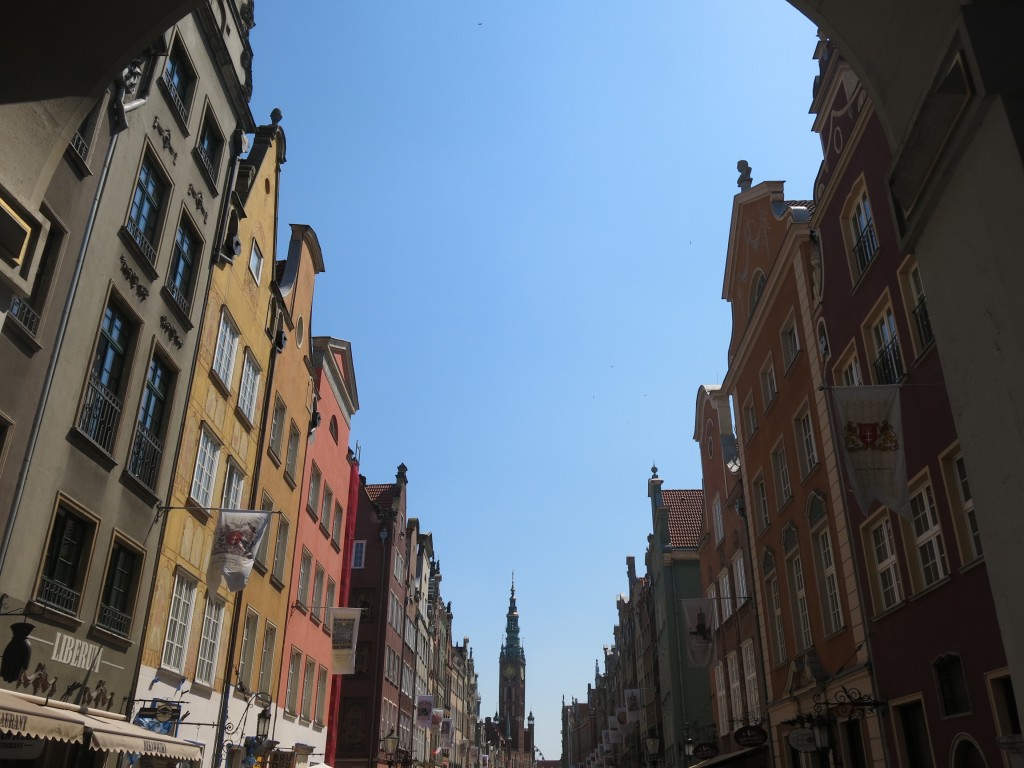 The City was mostly destroyed during WWII. A significant part of the town has been reconstructed. Still there are many authentic buildings.
The City was mostly destroyed during WWII. A significant part of the town has been reconstructed. Still there are many authentic buildings. 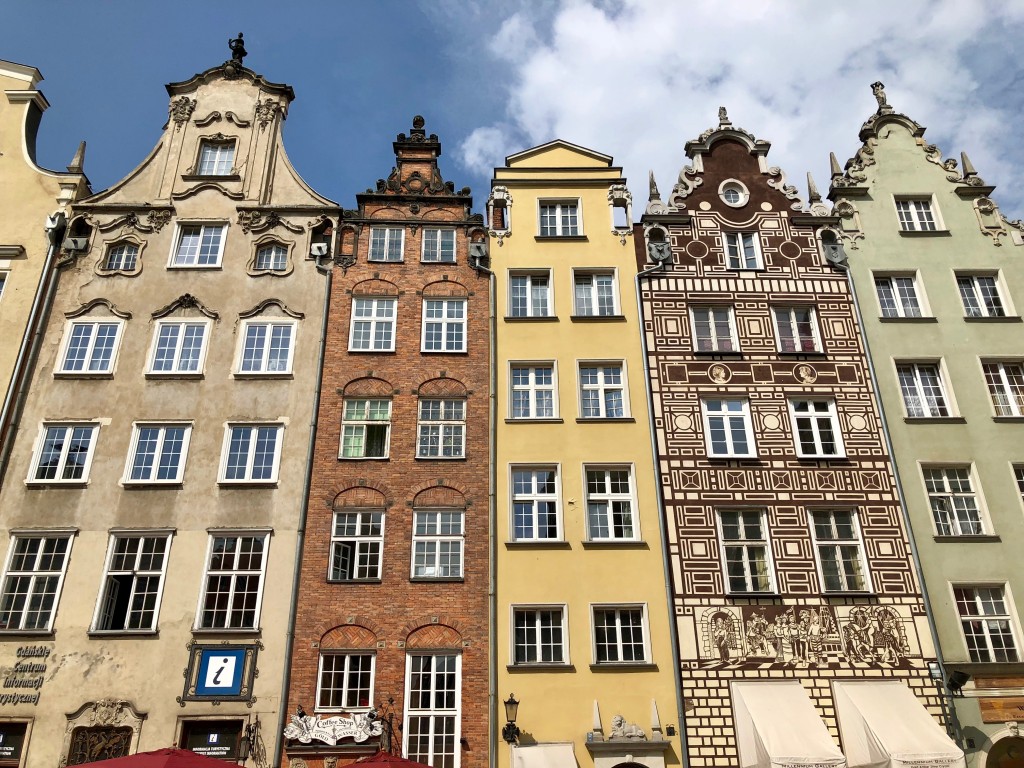 Architecturally, Gdańsk reminded me of Amsterdam. Others say it more closely resembles Copenhagen and Hamburg.
Architecturally, Gdańsk reminded me of Amsterdam. Others say it more closely resembles Copenhagen and Hamburg.  Gdańsk does not have a Rynek, main square, as Krakow does (and most Polish towns). Rather there is a long wide street, called Long Street or Dlugi Targ (the Long Market). It’s not as wide as Las Ramblas in Barcelona.
Gdańsk does not have a Rynek, main square, as Krakow does (and most Polish towns). Rather there is a long wide street, called Long Street or Dlugi Targ (the Long Market). It’s not as wide as Las Ramblas in Barcelona. The Town Hall dates from 1379, when Gdańsk was dominated by the Teutonic Knights. In the following centuries when under Polish rule, the town thrived and the Town Hall was expanded. It’s a striking Gothic and Renaissance building with a statue of King Sigismund Vasa (1548-1572) on top. Severely damaged during the war, the walls were saved and after the war the town reconstructed it.
The Town Hall dates from 1379, when Gdańsk was dominated by the Teutonic Knights. In the following centuries when under Polish rule, the town thrived and the Town Hall was expanded. It’s a striking Gothic and Renaissance building with a statue of King Sigismund Vasa (1548-1572) on top. Severely damaged during the war, the walls were saved and after the war the town reconstructed it.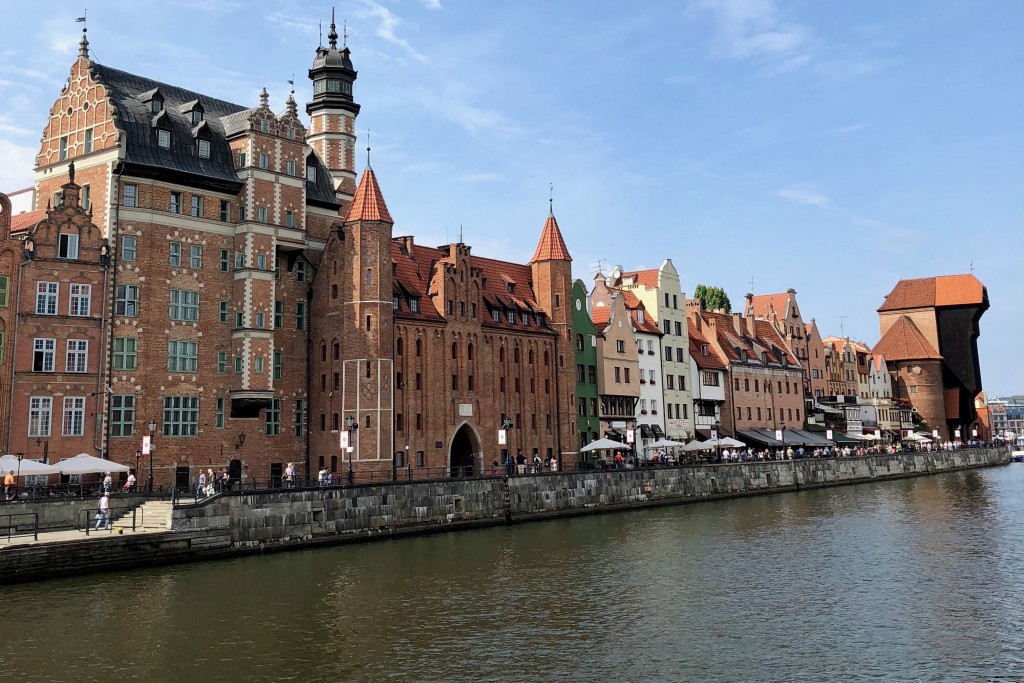 Long Street ends with the Green Gate. After passing through one’s arrived to the Harbor.
Long Street ends with the Green Gate. After passing through one’s arrived to the Harbor. 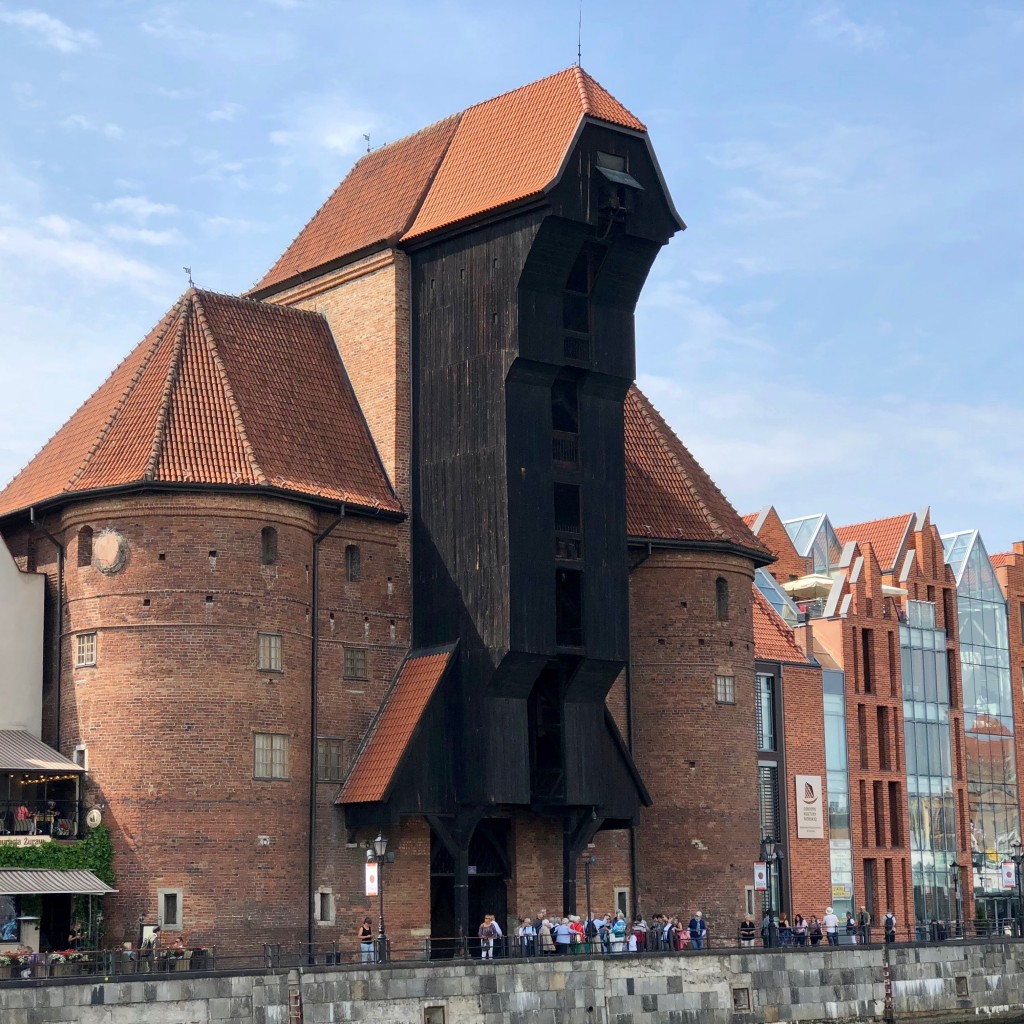 How cool is this? The Crane (1444) can lift 4 tons, one of the most powerful cranes of its time. And it’s still there!
How cool is this? The Crane (1444) can lift 4 tons, one of the most powerful cranes of its time. And it’s still there! 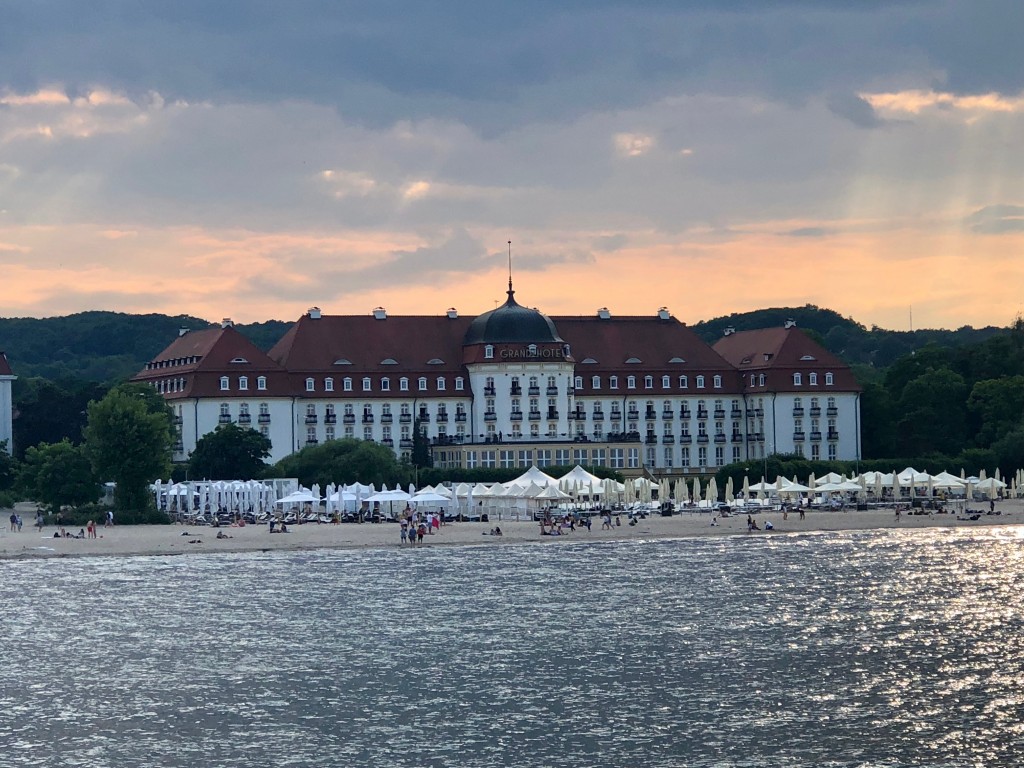 Went to Sopot twice, a town in between Gdańsk and Gydnia, which makes up the Tri-City. Sopot has been a resort town since the 16th Century (it’s first mentioned in a document in 1283). The Grand Hotel (1927) is grand indeed! This was taken coming back from Hel, yes, Hel!, the tip of the penisula, a few hours from Gdańsk by boat.
Went to Sopot twice, a town in between Gdańsk and Gydnia, which makes up the Tri-City. Sopot has been a resort town since the 16th Century (it’s first mentioned in a document in 1283). The Grand Hotel (1927) is grand indeed! This was taken coming back from Hel, yes, Hel!, the tip of the penisula, a few hours from Gdańsk by boat. 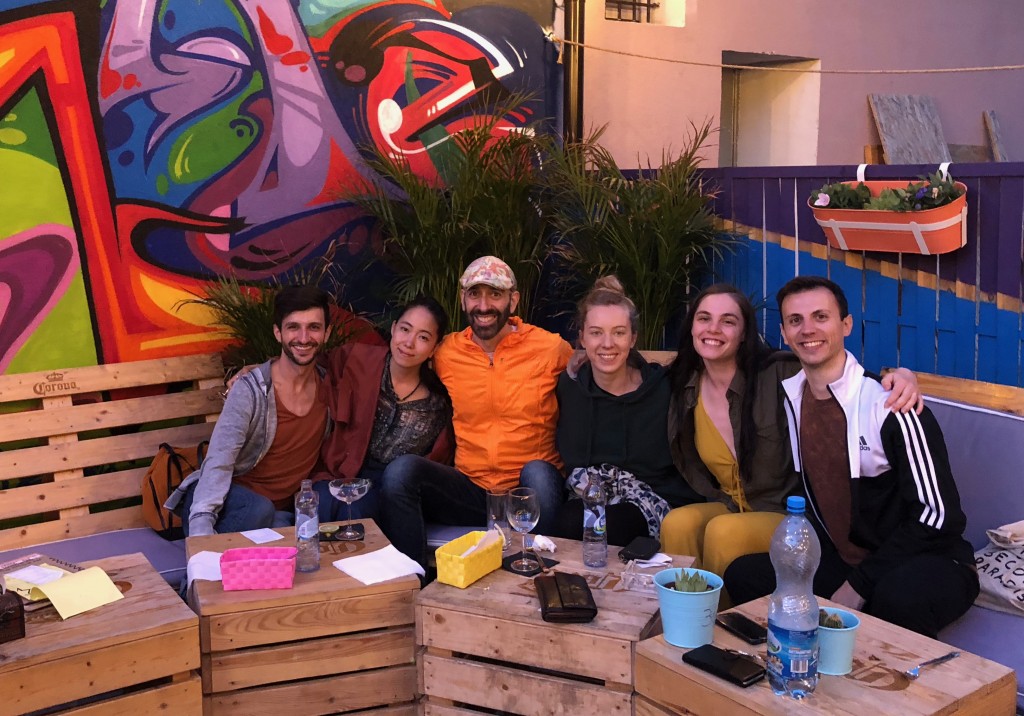 Before everyone scattered their own ways, a handful of us remained. We celebrated at a terrific Mexican restaurant with dj in the garden. Andrew Pearson (L.A.), Aya Toraiwa (Japan), Leila Ka (France), Rebecca Margolick (Canada), and Jonathan Breton (France).
Before everyone scattered their own ways, a handful of us remained. We celebrated at a terrific Mexican restaurant with dj in the garden. Andrew Pearson (L.A.), Aya Toraiwa (Japan), Leila Ka (France), Rebecca Margolick (Canada), and Jonathan Breton (France). And then trained 6 hours south to Krakow. The trip was only eleven days, but I managed to take well over 2000 photos. Here are a few of the best from Krakow. The eccentric Wawel Royal Castle which describes its history visually.
And then trained 6 hours south to Krakow. The trip was only eleven days, but I managed to take well over 2000 photos. Here are a few of the best from Krakow. The eccentric Wawel Royal Castle which describes its history visually. 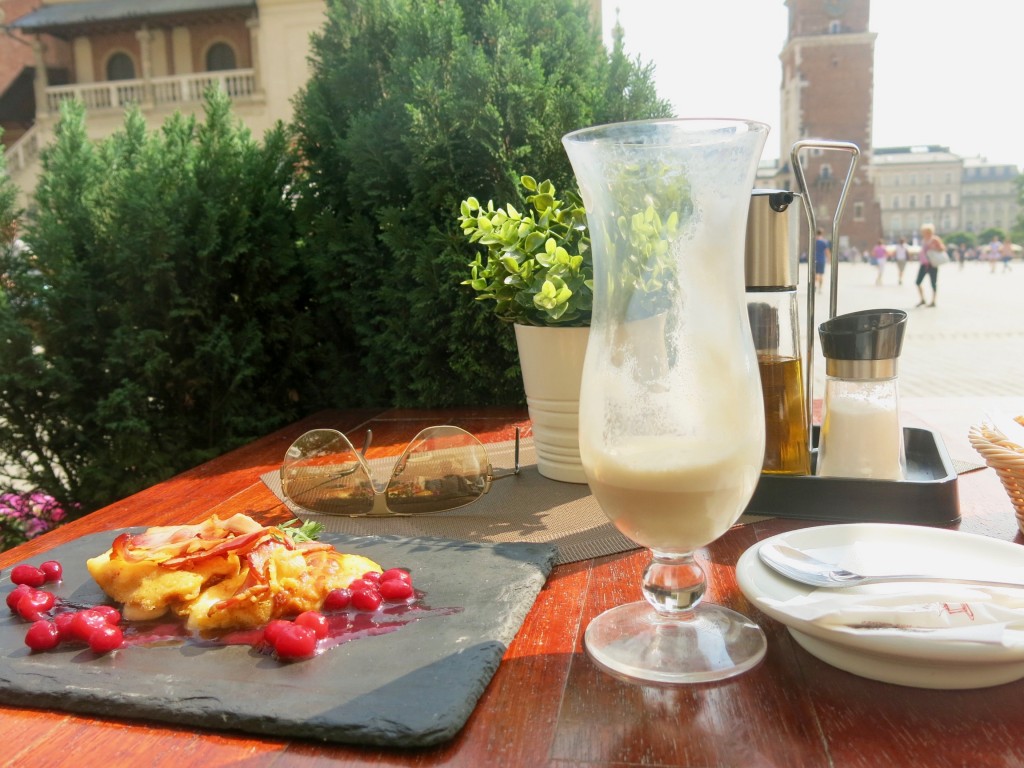 At the Main Square I had a meal at Chopin Restaurant, appropriately named. Oscypek, a traditional Polish dish of grilled cheese made from smoked sheep’s milk cheese, is grilled cheese without the bread. What could be bad?
At the Main Square I had a meal at Chopin Restaurant, appropriately named. Oscypek, a traditional Polish dish of grilled cheese made from smoked sheep’s milk cheese, is grilled cheese without the bread. What could be bad? 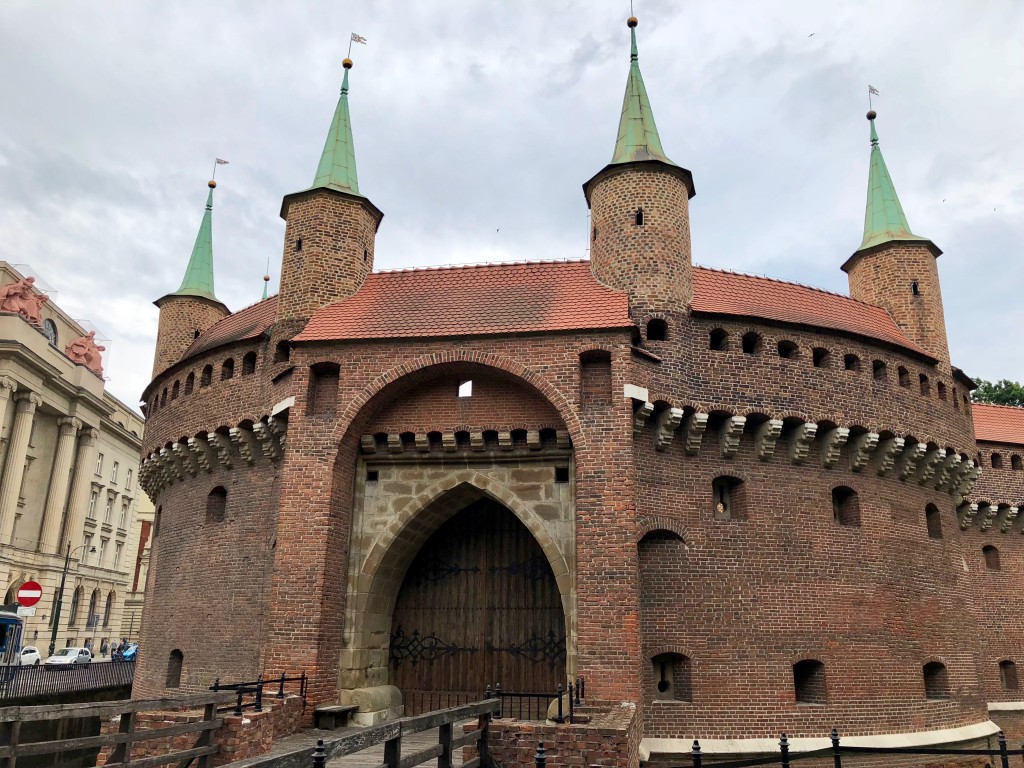 The impressive Barbican is the fortress-like gate leading into the Old Town. Krakow’s built defenses helped keep the city from being destroyed or damaged throughout its history.
The impressive Barbican is the fortress-like gate leading into the Old Town. Krakow’s built defenses helped keep the city from being destroyed or damaged throughout its history. 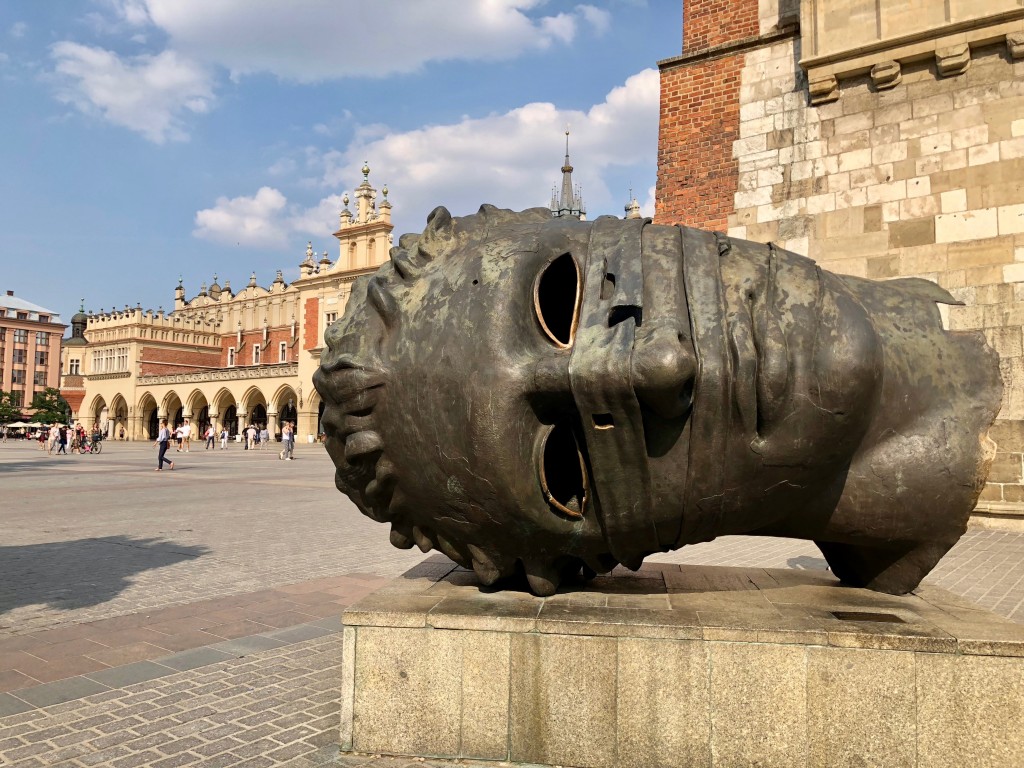 The Main Square was excavated recently. An entire underground city was found, with over 11,000 objects.
The Main Square was excavated recently. An entire underground city was found, with over 11,000 objects.  Terrific acrobats all across the bridge over the Vistula River connecting Kazimierz to the old Jewish Ghetto in Podgórze.
Terrific acrobats all across the bridge over the Vistula River connecting Kazimierz to the old Jewish Ghetto in Podgórze.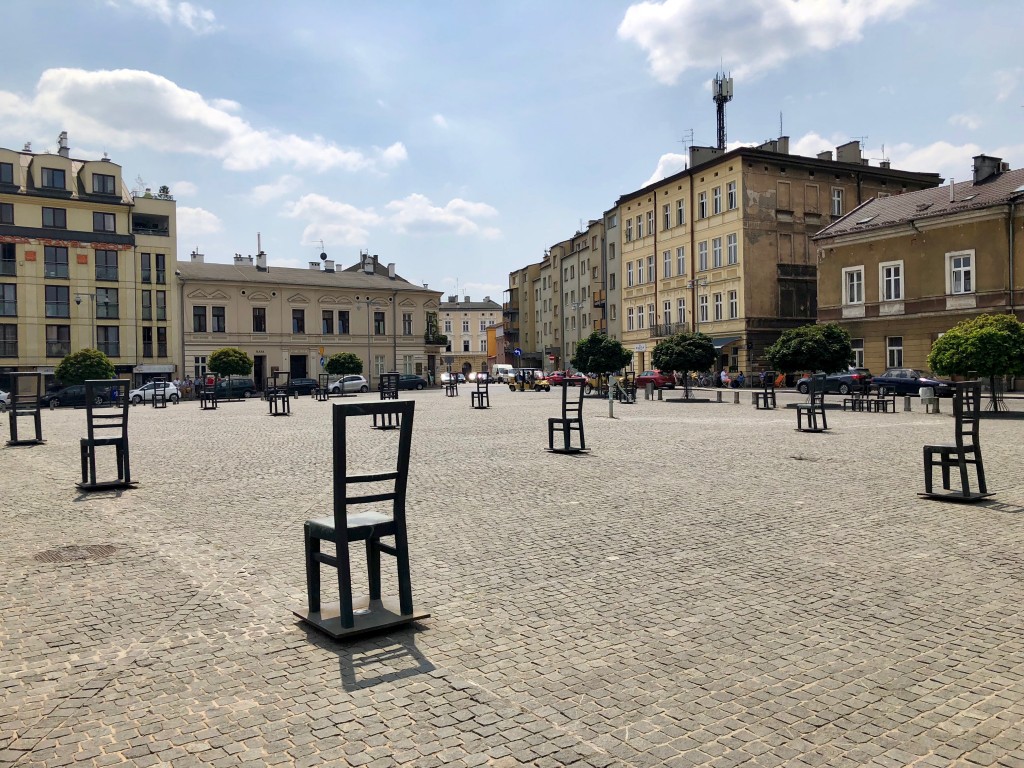 The site of the liquidation of the remaining 20,000 Jews in Krakow, the Krakow Ghetto, one of five created by the Nazis, features 70 metal chairs meant to symbolise departure or absence.
The site of the liquidation of the remaining 20,000 Jews in Krakow, the Krakow Ghetto, one of five created by the Nazis, features 70 metal chairs meant to symbolise departure or absence. 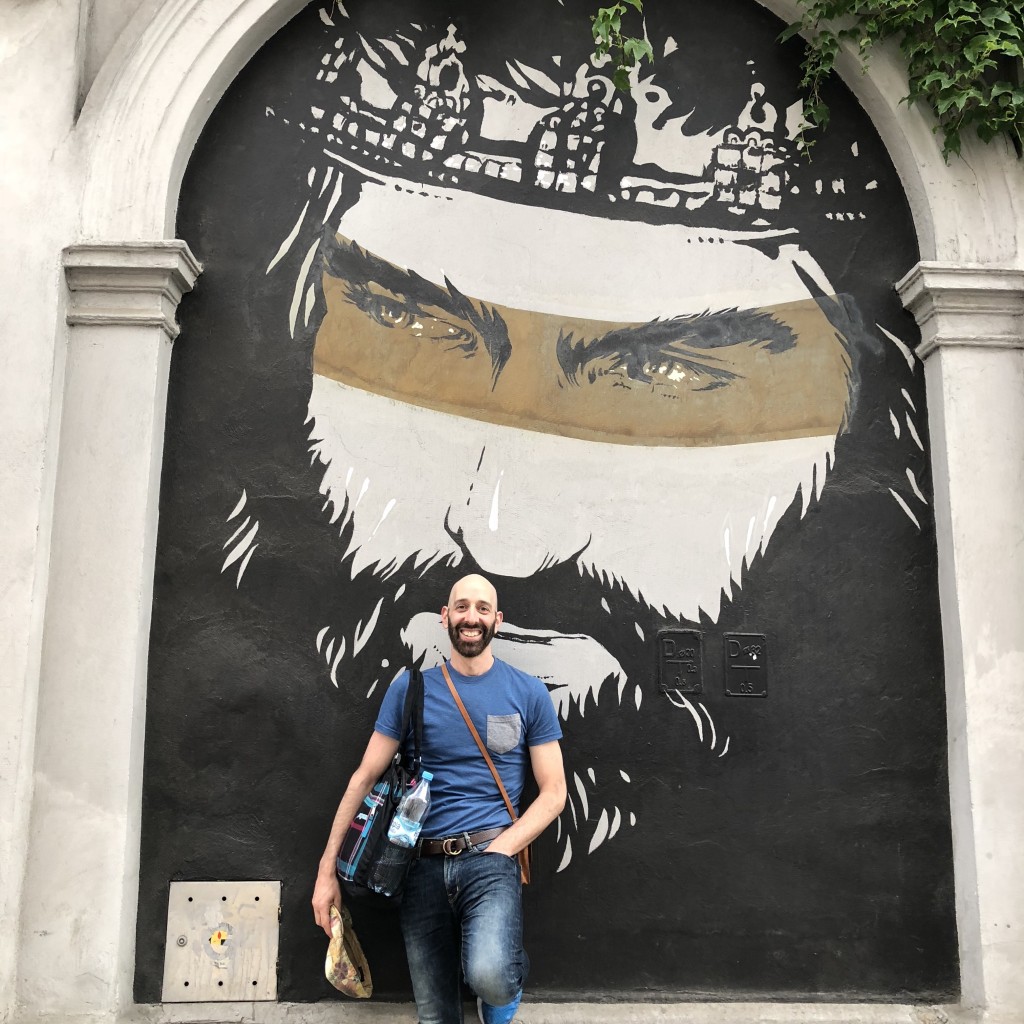 The Face of the City. And a handsome one at that! Kazimierz was King 1333-1370. Poland’s territory tripled under his reign. It is said: “He found Poland made of wood and left it made of stone.”
The Face of the City. And a handsome one at that! Kazimierz was King 1333-1370. Poland’s territory tripled under his reign. It is said: “He found Poland made of wood and left it made of stone.” 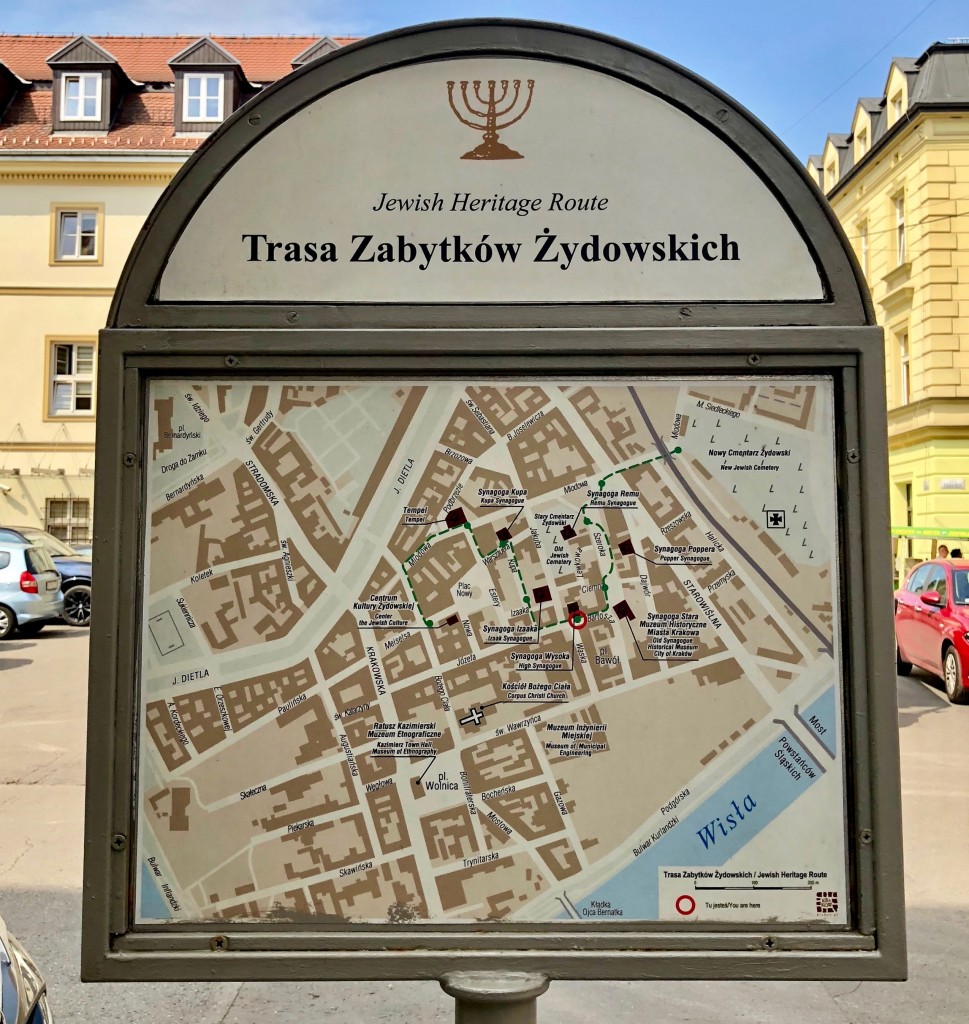 The Jewish Quarter, once its own city, named for him. Amazing to walk around here!
The Jewish Quarter, once its own city, named for him. Amazing to walk around here! 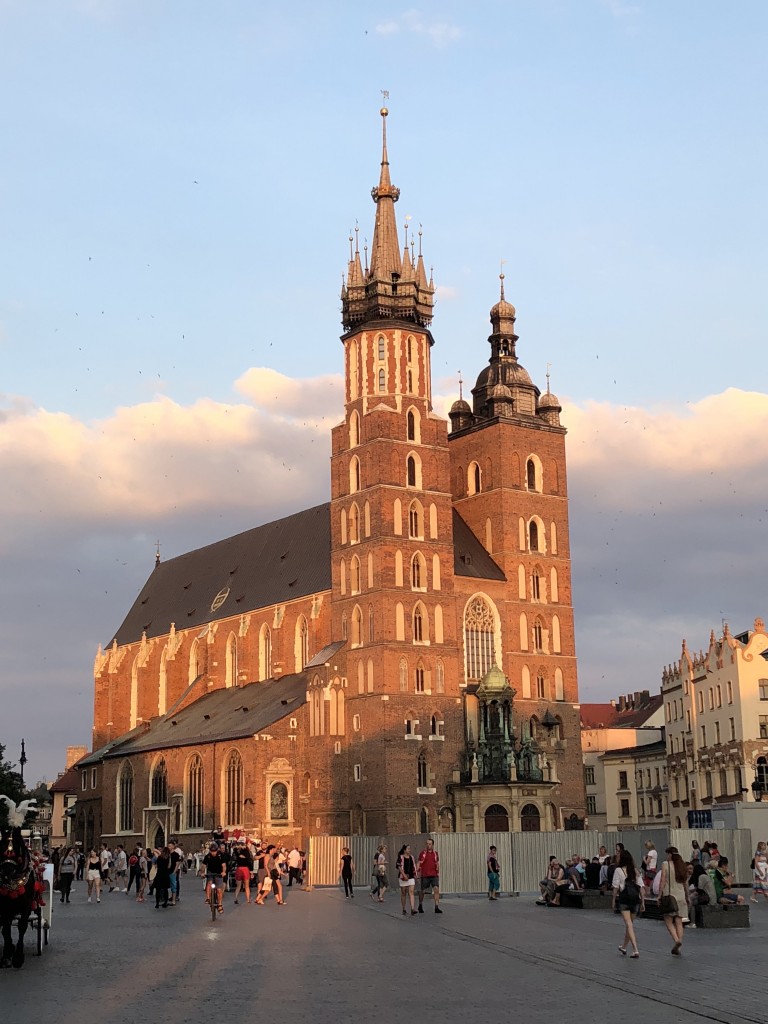 St. Mary’s Basilica is striking at anytime of day, but when the afternoon light focused solely on its facade, it was stunning.
St. Mary’s Basilica is striking at anytime of day, but when the afternoon light focused solely on its facade, it was stunning. 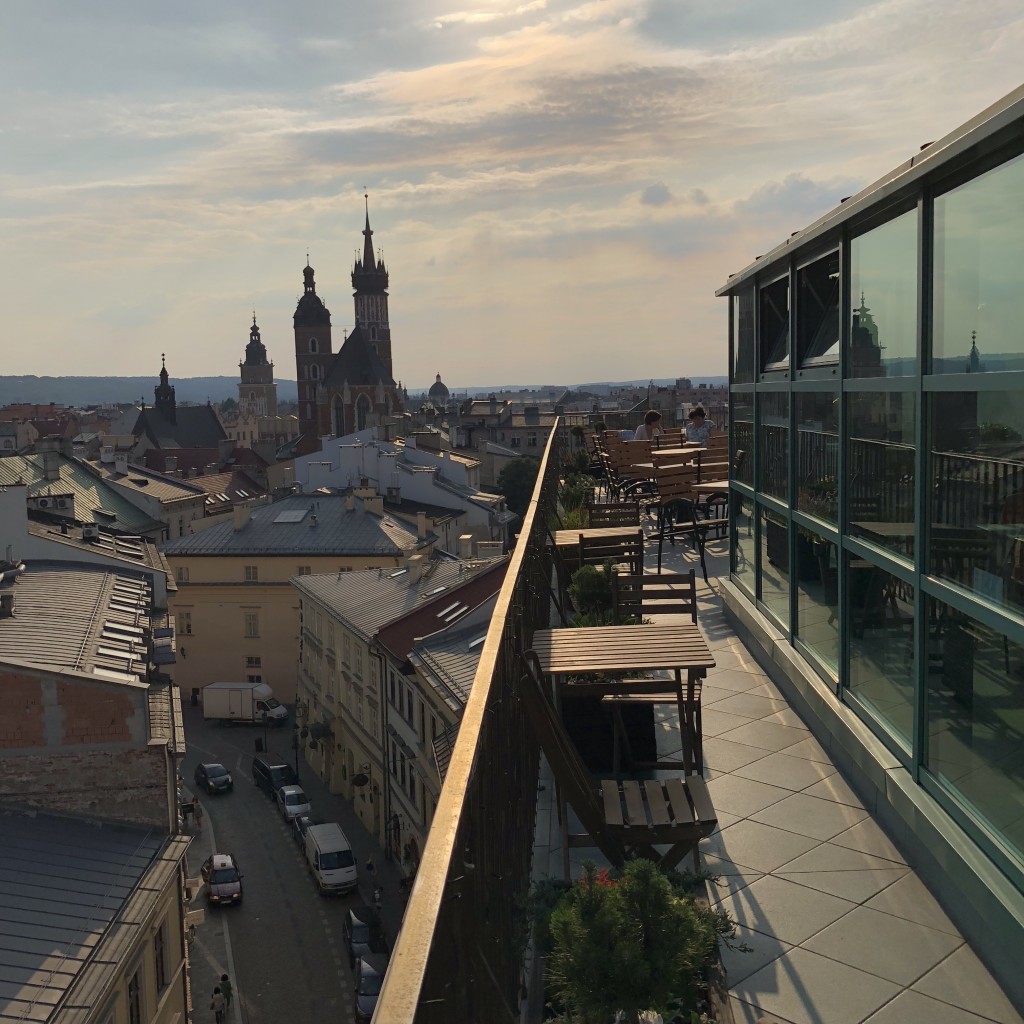 Incredible view from the top of the Music Academy.
Incredible view from the top of the Music Academy.
 It was a memorable afternoon sitting at this cafe on the roof, catching the sun, staring at beauty and contemplating history.
It was a memorable afternoon sitting at this cafe on the roof, catching the sun, staring at beauty and contemplating history. 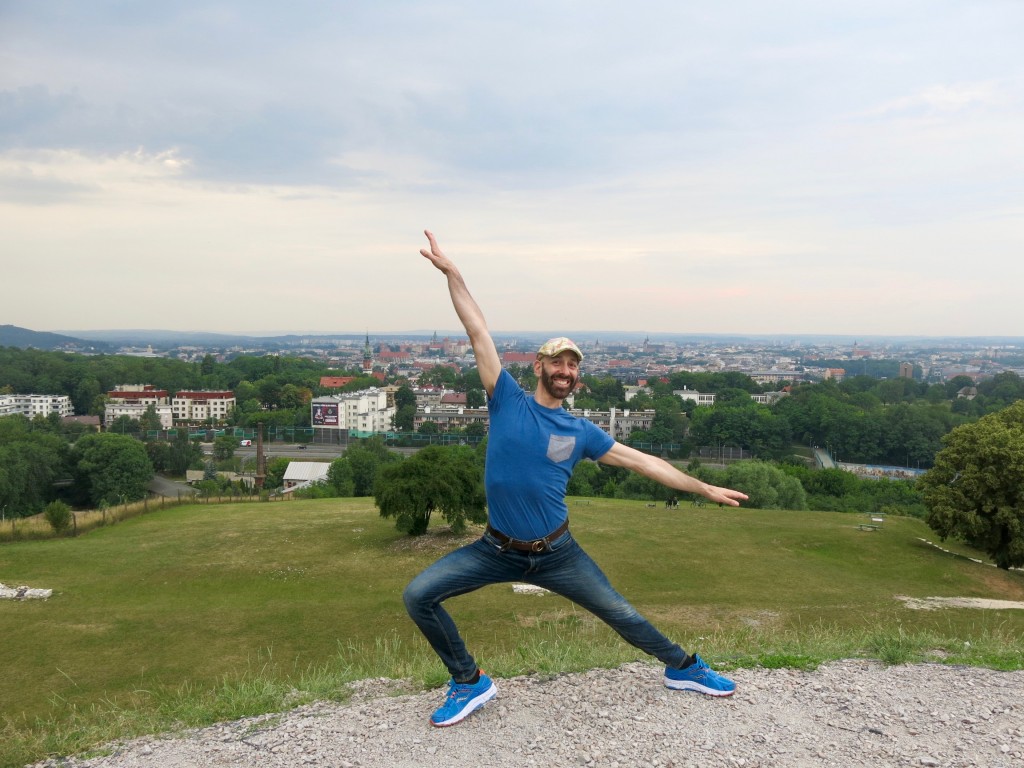 A terrific hike to one of the Mounds just outside Krakow provided this panoramic view!
A terrific hike to one of the Mounds just outside Krakow provided this panoramic view! 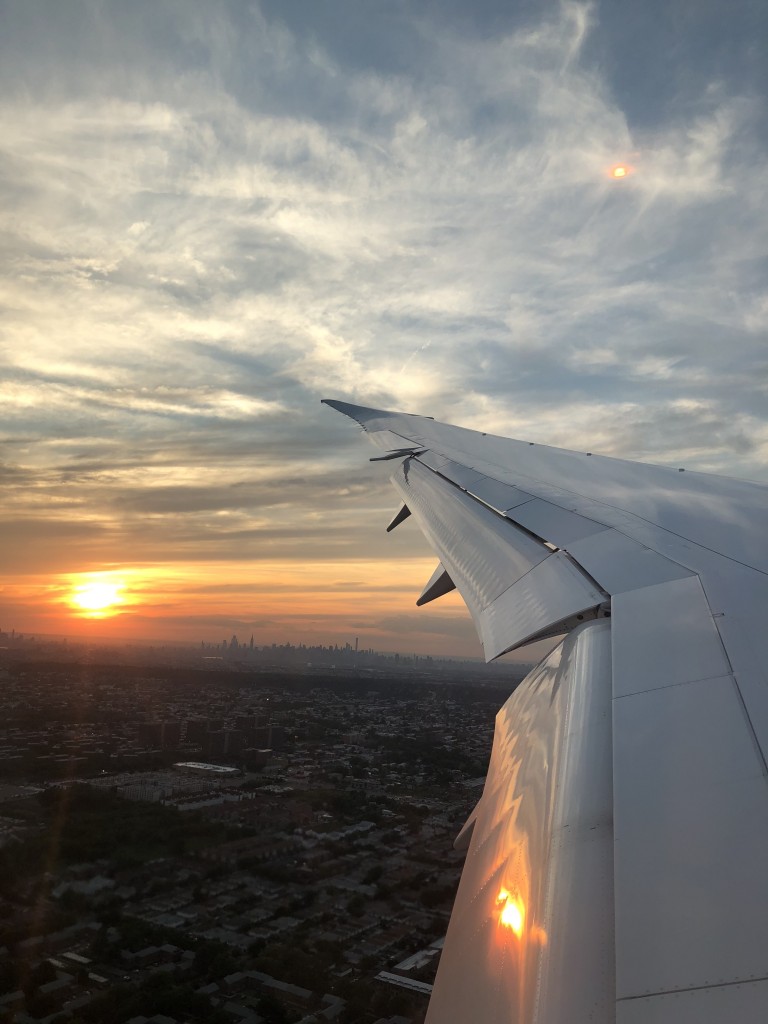 Nothing like a vibrant sunset to greet one’s return home!
Nothing like a vibrant sunset to greet one’s return home!
